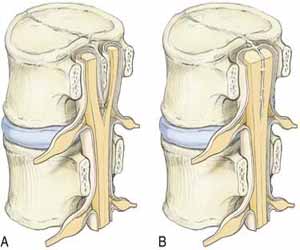- Home
- Editorial
- News
- Practice Guidelines
- Anesthesiology Guidelines
- Cancer Guidelines
- Cardiac Sciences Guidelines
- Critical Care Guidelines
- Dentistry Guidelines
- Dermatology Guidelines
- Diabetes and Endo Guidelines
- Diagnostics Guidelines
- ENT Guidelines
- Featured Practice Guidelines
- Gastroenterology Guidelines
- Geriatrics Guidelines
- Medicine Guidelines
- Nephrology Guidelines
- Neurosciences Guidelines
- Obs and Gynae Guidelines
- Ophthalmology Guidelines
- Orthopaedics Guidelines
- Paediatrics Guidelines
- Psychiatry Guidelines
- Pulmonology Guidelines
- Radiology Guidelines
- Surgery Guidelines
- Urology Guidelines
11- years old Split Cord Malformation patient successfully treated by Global Hospital Surgeons

An 11 years old female patient with a rare condition called split cord malformation has been successfully treated by Global Hospital surgeons. Split cord malformation is a rare congenital disorder in which an individual is born with split or duplicate spinal cords. The patient presented with scoliosis, abnormal development of spinal curvature by birth.
Recently, she had also developed difficulty in walking and was treated medically without any benefit. The team of doctors performed 6 hours long complex surgery to microsurgically remove the intervening bone or fibrous tissue and reconstruct the dural coverings of the spinal cord of the patient.
The patient, a resident of Kurdistan, was a small kid when her mother noticed that she was limping while walking. Slowly, the child started developing scoliosis of the spine. Her right leg appeared shorter than her left one, which was initially thought to be the reason for walking difficulties. Even after active treatment from her doctors, her condition continued to worsen. Later, the local Neurosurgeon detected the spinal problem on x-rays and spinal MRI. There was an abnormal block of bone in the center of the spine that was causing splitting and tethering of the spinal cord, which led to the development of scoliosis and gait difficulties in this child.
Explaining the medical condition and its complexities, Dr Suresh Sankhla, HOD- Neurosurgery, Global Hospital, Parel said, “This patient presented with a rare congenital spinal disorder in which her spinal cord is divided into two halves by a block of bone - a condition known as split cord malformation. Spinal dysraphism is a well-known congenital spinal anomaly with a wide variety of disorders. Split cord malformation is a less common type of spinal dyspharism observed in less than 1 % of children. Incidentally, Savya had an extreme variety of this malformation. In the early stages, the child is generally asymptomatic, but as the child grows, the problems due to spinal tethering become evident in the form of pain, spinal deformities, walking difficulties, paralysis, and loss of urine control.”
Dr Sankhla added, “This condition, which may occur due to maternal malnutrition, requires a surgical procedure to microsurgically remove the intervening bone or fibrous tissue and reconstruct the dural coverings of the spinal cord. This complex surgery on Savya, which lasted for 6 hours, was successfully performed on July 10. As was comfortable and had an excellent postoperative recovery, she was discharged from the hospital on the 3rd day after the surgery. Her scoliosis will slowly get corrected with dedicated physiotherapy over the next few months. The children whose malformations have been diagnosed and treated early, usually recover completely with minimal risks of long-term disabilities.”

Disclaimer: This site is primarily intended for healthcare professionals. Any content/information on this website does not replace the advice of medical and/or health professionals and should not be construed as medical/diagnostic advice/endorsement or prescription. Use of this site is subject to our terms of use, privacy policy, advertisement policy. © 2020 Minerva Medical Treatment Pvt Ltd